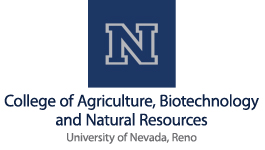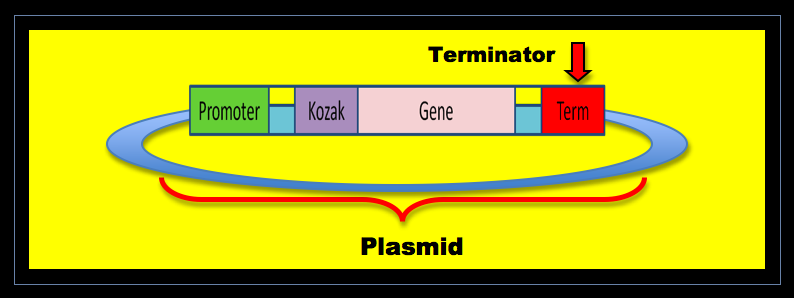Team:Nevada/plasmid w terminator sequences
From 2010.igem.org
(→Plasmid with Terminator Sequence) |
|||
| Line 15: | Line 15: | ||
<html><a href="https://static.igem.org/mediawiki/2010/0/05/PiGEM10.gif"><img src="https://static.igem.org/mediawiki/2010/0/05/PiGEM10.gif" class="shadow" style="float:left;width:900px;margin:10px"></a></html> | <html><a href="https://static.igem.org/mediawiki/2010/0/05/PiGEM10.gif"><img src="https://static.igem.org/mediawiki/2010/0/05/PiGEM10.gif" class="shadow" style="float:left;width:900px;margin:10px"></a></html> | ||
<br> | <br> | ||
| - | <br><p>pBIB HYG was chosen as the basis for our vector construction based on the following criteria. First, unlike many plant transformation vectors, pBIB HYG appears to be freely available in the public domain. Patent searches failed to turn up any past or pending patents that may restrict the use of the plasmid. Second, pBIB HYG is derived from the well characterized pBIN19 plant transformation vector series which has been used in the transformation of a wide variety of plant species. Third, pBIB HYG required the fewest modifications to become compatible with current Biobrick standards. | + | <br><p>pBIB HYG was chosen as the basis for our vector construction based on the following criteria. First, unlike many plant transformation vectors, pBIB HYG appears to be freely available in the public domain. Patent searches failed to turn up any past or pending patents that may restrict the use of the plasmid. Second, pBIB HYG is derived from the well characterized pBIN19 plant transformation vector series, which has been used in the transformation of a wide variety of plant species. Third, pBIB HYG required the fewest modifications to become compatible with current Biobrick standards. |
<br> | <br> | ||
<br>'''piGEM10 Features''' | <br>'''piGEM10 Features''' | ||
| - | <br>The piGEM10 backbone, which is derived from pBIN19, possesses a RK2 broad host plasmid origin of replication that allows for its use in both E. coli and Agrobacterium tumefaciens. The RK2 origin of replication allows the investigator to manipulate the plasmid in E. coli and then transform the finished plasmid to the appropriate Agrobacterium strain for transformation into plants. One unfortunate consequence of plasmids with RK2 origins is that they are low copy number plasmids and therefore one must use larger cultures when isolating these plasmids. piGEM10 also possesses a bacterial expressed neomycin phosphotransferase 2 (NPT2) gene that confers kanamycin resistance in bacteria carrying this plasmid. 50 μg/mL of kanamycin should be used to select for bacterial transformants containing this plasmid. The plasmid also contains the T-DNA Left (LB) and Right Border (RB) sequences which are required for the integration of recombinant DNA fragments into the genome of target plant transformation host. Between the LB and RB are two plant gene expression cassettes. The first expression cassette consist of the nopoline synthase promoter, the hygromycin B phosphotransferase (HPT) gene and a plant polyadenylation signal sequences. The nopoline synthase promoter allows for high-level and constitutive transcription HPT in plant cells. When selecting for plants transformed with this vector, 50 μg/mL hygromycin should be added to the tissue culture medium. The second gene cassette consists of the plant stress inducible RD29 promoter; a plant optimized red fluorescent protein gene and nopoline synthase NOS terminator.</p> | + | <br>The piGEM10 backbone, which is derived from pBIN19, possesses a RK2 broad host plasmid origin of replication that allows for its use in both E. coli and Agrobacterium tumefaciens. The RK2 origin of replication allows the investigator to manipulate the plasmid in E. coli and then transform the finished plasmid to the appropriate Agrobacterium strain for transformation into plants. One unfortunate consequence of plasmids with RK2 origins is that they are low copy number plasmids and therefore one must use larger cultures when isolating these plasmids. piGEM10 also possesses a bacterial expressed neomycin phosphotransferase 2 (NPT2) gene that confers kanamycin resistance in bacteria carrying this plasmid. 50 μg/mL of kanamycin should be used to select for bacterial transformants containing this plasmid. The plasmid also contains the T-DNA Left (LB) and Right Border (RB) sequences, which are required for the integration of recombinant DNA fragments into the genome of target plant transformation host. Between the LB and RB are two plant gene expression cassettes. The first expression cassette consist of the nopoline synthase promoter, the hygromycin B phosphotransferase (HPT) gene and a plant polyadenylation signal sequences. The nopoline synthase promoter allows for high-level and constitutive transcription HPT in plant cells. When selecting for plants transformed with this vector, 50 μg/mL hygromycin should be added to the tissue culture medium. The second gene cassette consists of the plant stress inducible RD29 promoter; a plant optimized red fluorescent protein gene and nopoline synthase NOS terminator.</p> |
Latest revision as of 19:33, 27 October 2010
Plasmid with Terminator Sequence
piGEM10 Plasmid Construction
Plant transformation vector piGEM10 was derived from the vector pBIB HYG (Becker (1990) Nuc Acid Res 18: 203). To construct this plasmid, a synthetic gene containing the Arabidopsis stress induced RD29 promoter, a red fluorescent protein (RFP) containing a plant optimized ribosome binding site, and the nopoline synthase (NOS) 3’ plant specific transcriptional terminator. The NOS terminator contains a plant specific sequences that signals transcriptional termination and the addition of a polyadenyled 3’ tail to the mature mRNA. HinD3, EcoR1 and Xba1 restriction sites were added respectively to the 5’ end of the RD29 promoter. Spe1 and Pst1 sites were inserted between the stop codon of the RFP gene and the NOS terminator. Additionally, an Mfe1 site was added to the 3’ end of the NOS 3’ terminator. This synthetic gene was subcloned into a plasmid designated as piGEM Nevada.
The synthetic gene construct from piGEM Nevada was then subcloned as a HinD3 Mfe1 fragment into the HinD3 EcoR1 site of pBIB HYG. Because Mfe1 and EcoR1 restriction sites generate compatible sticky ends that when joined cannot be re-cleaved by either enzyme, by subcloning the synthetic gene as a HinD3 Mfe1 fragment instead of a HinD3 EcoR1 fragment we were able to destroy the EcoR1 site located at the 3’ end of the NOS 3’ terminator. The resulting plasmid now contains Biobrick compatible cut sites flanking the 5’ end of the promoter and 3’ end of the reporter gene. This configuration will allow for the exchange of the RD29 promoter / RFP fusion with any other promoter / gene fusion construct. We are in the process of removing an unwanted Pst1 site located in the plasmid backbone. However, the vector is still useable now by cloning promoter / gene fusions as EcoR1 Spe1 fragments into the EcoR1 Spe1 sites of piGEM10.
pBIB HYG was chosen as the basis for our vector construction based on the following criteria. First, unlike many plant transformation vectors, pBIB HYG appears to be freely available in the public domain. Patent searches failed to turn up any past or pending patents that may restrict the use of the plasmid. Second, pBIB HYG is derived from the well characterized pBIN19 plant transformation vector series, which has been used in the transformation of a wide variety of plant species. Third, pBIB HYG required the fewest modifications to become compatible with current Biobrick standards.
piGEM10 Features
The piGEM10 backbone, which is derived from pBIN19, possesses a RK2 broad host plasmid origin of replication that allows for its use in both E. coli and Agrobacterium tumefaciens. The RK2 origin of replication allows the investigator to manipulate the plasmid in E. coli and then transform the finished plasmid to the appropriate Agrobacterium strain for transformation into plants. One unfortunate consequence of plasmids with RK2 origins is that they are low copy number plasmids and therefore one must use larger cultures when isolating these plasmids. piGEM10 also possesses a bacterial expressed neomycin phosphotransferase 2 (NPT2) gene that confers kanamycin resistance in bacteria carrying this plasmid. 50 μg/mL of kanamycin should be used to select for bacterial transformants containing this plasmid. The plasmid also contains the T-DNA Left (LB) and Right Border (RB) sequences, which are required for the integration of recombinant DNA fragments into the genome of target plant transformation host. Between the LB and RB are two plant gene expression cassettes. The first expression cassette consist of the nopoline synthase promoter, the hygromycin B phosphotransferase (HPT) gene and a plant polyadenylation signal sequences. The nopoline synthase promoter allows for high-level and constitutive transcription HPT in plant cells. When selecting for plants transformed with this vector, 50 μg/mL hygromycin should be added to the tissue culture medium. The second gene cassette consists of the plant stress inducible RD29 promoter; a plant optimized red fluorescent protein gene and nopoline synthase NOS terminator.

| 
| 
| 
| 
| 
|
|---|
 "
"

